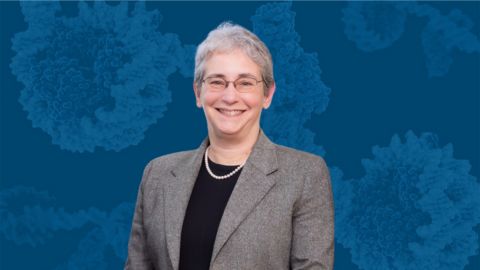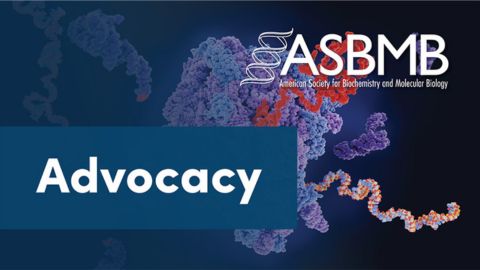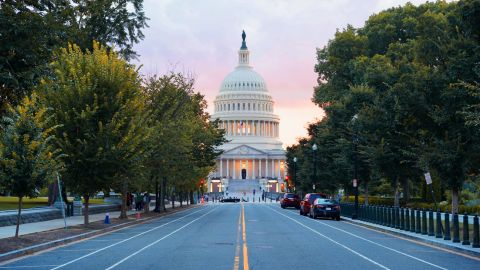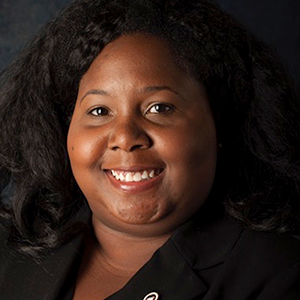ASBMB supports bill to lower cost of federal student loans
The American Society for Biochemistry and Molecular Biology endorsed the Lowering Obstacles to Achievement Now Act on Nov. 4.
If made law, the legislation will double federal Pell grants, make loans less expensive by tying interest rates to the 10-year Treasury note and reduce the number of payments required of participants in the Public Service Loan Forgiveness program.
“The twin efforts in the LOAN Act to reduce the lifetime cost of loans will help relieve some of the post-graduate financial burden,” said Karen Lewis, a member of the ASBMB Public Affairs Advisory Committee.
What the LOAN Act would do
Double Pell grants: Pell grants are targeted for the neediest students. The maximum Pell grant is currently $6,495. The LOAN act would increase the maximum amount to $13,000 over five years, as well as allowing students and families enrolled in a federal benefit program, such as the Supplemental Nutrition Assistance Program or Medicaid, to automatically qualify for the maximum aid. The bill also would allow students completing graduate or professional degrees to use any remaining Pell eligibility from their undergraduate studies.
Lower the cost of federal student loans: The acts will eliminate capitalization on loans. In other words, unpaid accrued interest will not be added to the borrower’s unpaid principal balance. Moreover, the legislation would tie the interest rates for all new federal student loans to the 10-year Treasury note, capping all interest rates at 5% and allowing all borrowers to refinance at this rate.
Shorten the PSLF program: Under the current PSLF program, public servants who make 120 on-time payments are eligible to have their federal student loans forgiven. The LOAN Act would reduce the number of payments to 96.
Expand federal student loan access to Dreamers: Immigrant students who are covered by the Deferred Action for Childhood Arrivals program do not qualify for federal student aid. The LOAN Act would make them eligible.
When the Parent Loan for Undergraduate Students program and the Auxiliary Loans to Assist Students program were established in the 1980s, more Americans were able to attend colleges, which turned around and hiked their tuition and fees.
Over the past 40 years, the cost of attending a four-year college has tripled. Today, an all-time high of over 45 million borrowers owe $1.7 trillion in student loans.
More specifically, doctoral students in science, technology, engineering and math fields hold an average of $31,000 in student loan debt, according to the National Science Board.
As tuition continues to rise and debt swells, many people are choosing the financial security of employment over the uncertainty of STEM doctoral programs.
“After earning their bachelor’s degree, many students actively choose to go into the workforce rather than pursue graduate training, because of the burden of student loans. They want to start paying down that debt before potentially incurring more. This significantly restricts the pipeline of prospective graduate students,” Lewis said.
In addition, while some repayment plans promise to pay off federal loans in 10 years, the average is actually 20 years. In fact, the Education Data Initiative has found that the “average medical school graduate’s salary is not sufficient to make their student loan payments.”
The dramatic increase in student loan debt combined with the current economic situation has left many Americans struggling to make ends meet. They have put off important life events, such as buying a house, starting a family or saving for retirement.
Women and people from historically marginalized racial and ethnic groups are disproportionately affected, as they have higher educational debt, greater family obligations and little to no intergenerational wealth.
By reducing the cost of student loans, the legislation will help the U.S. retain diverse talent in the STEM workforce.
Enjoy reading ASBMB Today?
Become a member to receive the print edition four times a year and the digital edition monthly.
Learn moreGet the latest from ASBMB Today
Enter your email address, and we’ll send you a weekly email with recent articles, interviews and more.
Latest in Policy
Policy highlights or most popular articles

Hope for a cure hangs on research
Amid drastic proposed cuts to biomedical research, rare disease families like Hailey Adkisson’s fight for survival and hope. Without funding, science can’t “catch up” to help the patients who need it most.

Supporting science through advocacy and community building
ASBMB calls on scientists to take action as funding cuts and policy shifts threaten the U.S. research enterprise, emphasizing the power of community advocacy and persistence in protecting the future of science.

Seven steps to advocating in your home state
Find out how to schedule, prepare for and conduct a productive district office meeting to communicate the importance of fundamental scientific research funding to your representatives.

ASBMB members call for funding and agency support amidst uncertainty
In 60 meetings on Capitol Hill, scientists urge legislators to reaffirm support for scientific innovation

Embrace your neurodivergence and flourish in college
This guide offers practical advice on setting yourself up for success — learn how to leverage campus resources, work with professors and embrace your strengths.

ASBMB honors Lawrence Tabak with public service award
He will deliver prerecorded remarks at the 2025 ASBMB Annual Meeting in Chicago.

